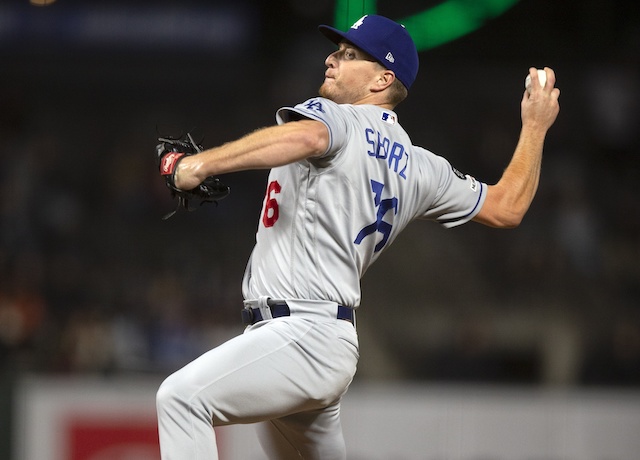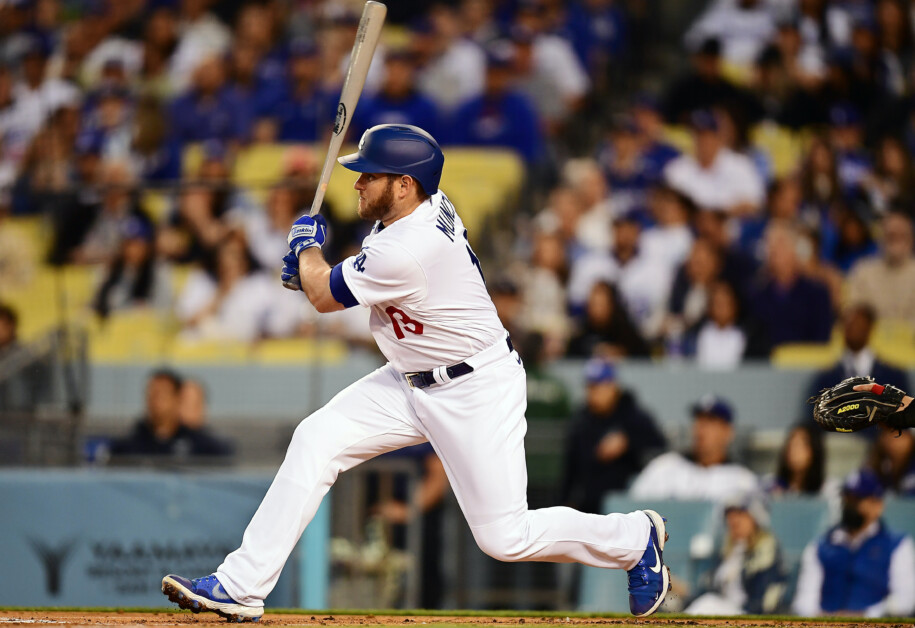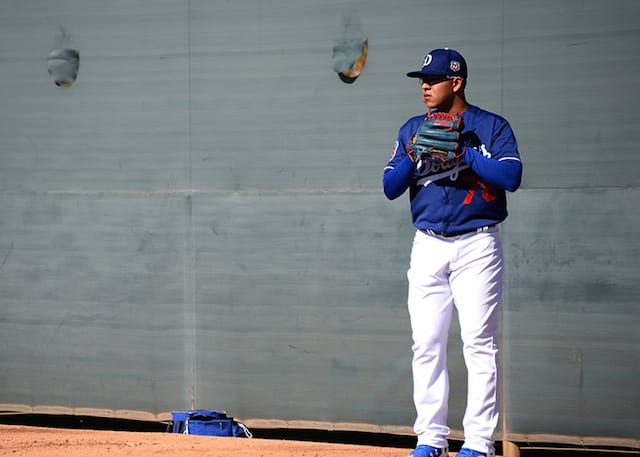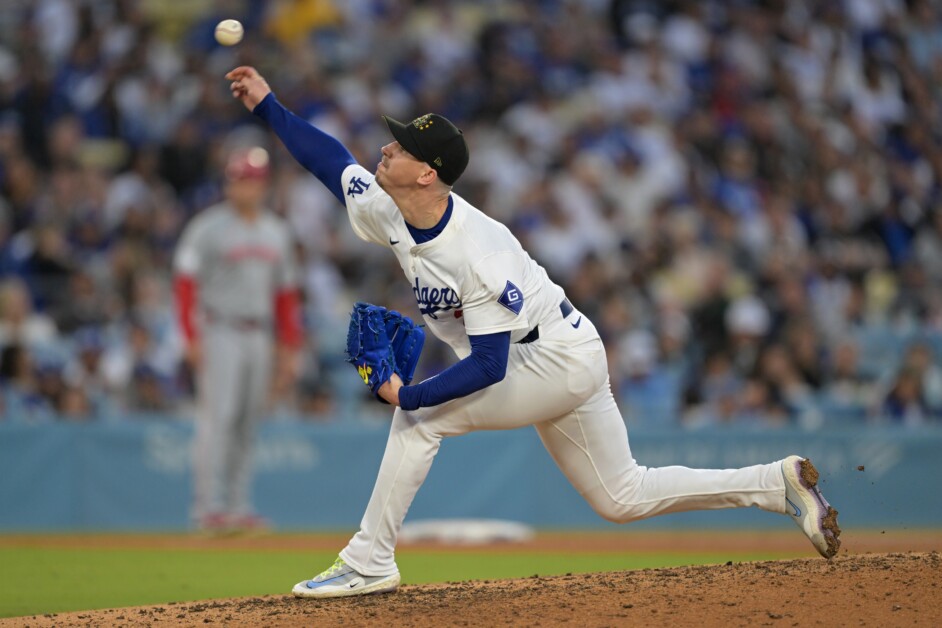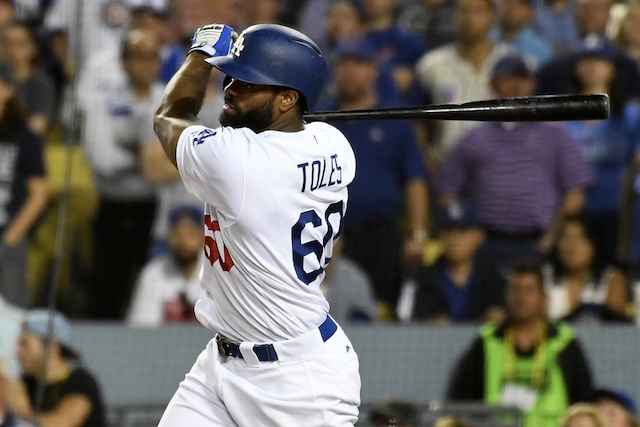
8. Andrew Toles, OF
Toles had one of the more remarkable seasons in baseball in 2016. The now-24-year-old was originally drafted by the Miami Marlins in the fourth round in 2010 but decided to go to college instead. After a year at Tennessee, he was dismissed from the school and enrolled at Chipola College, a junior college, becoming eligible for the 2012 draft. He was then taken in the third round by the Tampa Bay Rays and signed.
In his first two seasons in the Minors, Toles batted .281 and .326, respectively. In 2013, he stole 62 stolen bases in 79 attempts. But things didn’t go well in 2014. Toles missed a significant amount of time and hit just .261 in 46 games in High-A. It got worse in the offseason, when he was released by the Rays due to off the field issues. He went on to become an extremely athletic grocer.
After missing a full season in 2015, the Dodgers took a flier on Toles in October of that year. Unsurprisingly, it was Dodgers president of baseball operations Andrew Friedman that took a chance on the former Rays outfielder, with some help from director of player development Gabe Kapler.
Not much was expected of someone who missed a year and hadn’t played above A-ball. What happened next was nothing short of astounding.
Toles began the year with the Quakes, a good hitters’ league, but no one expected him to bat .370 and steal nine bases in 22 games. That prompted a quick promotion to Double-A Tulsa, where continued hitting well. He slashed .314/.363/.514 while stealing 13 bases. Toles then moved up to Triple-A Oklahoma City, where he hit .321.
Then, on July 8, he made his major league debut. Just 16 months after he was cut by the Rays and out of baseball, Toles was in the Majors. Surely, his production would tail off, right? Not so.
In 48 major league games, Toles hit .314/.365/.505. He even made the postseason roster for both of the Dodgers’ series, going 6-for-13 against the Chicago Cubs.
A fireplug type build gives the smaller Toles more power than one would expect from someone his height. But it’s his ability to make contact that will help him contribute with the bat. He’s a career .300 hitter in the Minor Leagues and, while he benefitted from a very high BABIP in the Majors, he also produced a 22 percent line drive rate.
A very good runner, Toles’ speed plays down a little when trying to steal due to subpar reads. It helps him in the outfield, though, where he can patrol center field and has plenty of arm for right.
Toles will likely be the Dodgers’ Opening Day starter in left field. It’s quite a climb, from out of baseball, to A-ball, to a big league debut, to Major League starter. How much he continues to develop on offense will determine his ultimate role, be it starter or fourth outfielder.
7. Brock Stewart, RHP
Born in Illinois, Stewart went to Illinois State where his father had coached. He began his college career as an infielder, but missed most of his sophomore season with injury. When Stewart came back for his junior year, he toyed with pitching. By his senior year, he had transitioned to pitching, even though he totaled just 27.2 innings and one start in his college career.
Despite so few innings, the Dodgers took Stewart in the sixth round of the 2014 Draft and sent him to Ogden, where he pitched mainly out of the bullpen and posted a 3.41 ERA. The next season, he moved up to Great Lakes, where he was converted to a starter and pitched well, earning a quick promotion to Rancho Cucamonga. There, he struggled, posting a 5.43 ERA with the Quakes.
In spring of 2016, I met Stewart’s father, now a scout for the Rays, while I was in Arizona for Spring Training. A few days later, I saw his son pitch and came away very impressed. He seemed like a guy who could really rise up the system if everything clicked.
At the start of the 2016 season, after just two starts with Rancho, Stewart was promoted to Tulsa and dominated. A 1.37 ERA in 10 starts led to another promotion to OKC. Three starts later, he was in the Majors, making his debut in Milwaukee in front of his family.
The start didn’t go as planned. After breezing through the first inning, Stewart allowed five runs in the second. He gutted it out for three more scoreless innings, but was sent back to Triple-A after the game.
He remained with OKC for four starts before re-joining the Dodgers. This was the beginning of him bouncing back and forth between the Majors and Minors. He’d come up and go back down four times before staying in Los Angeles for good in September.
Stewart ended the season with a 5.79 ERA in the Majors, though he did hold the Cubs scoreless for five innings in August.
Stewart is athletic and strong, with a very solid 6’3, 210-pound frame. His delivery is pretty easy and he throws slightly across his body, adding deception. His fastball averaged 94 mph in the Majors, per Brooks Baseball, and he can sink it. He throws both a slider and a changeup, each having the potential to become plus pitches.
Sidelined with a sore shoulder after just two appearances this spring, the Dodgers will be cautious with their handling of the young righty. When he’s ready, he’ll head to Oklahoma City and wait to hear his name called again.
6. Willie Calhoun, 2B
After initially heading to Arizona out of high school, Calhoun left the program after his freshman season and enrolled at Yavapai College, making him draft eligible in 2015. While he wasn’t a perfect prospect, his numbers alone would have gotten him drafted.
Calhoun batted .432/.520/.952 with 23 doubles and 31 home runs in 63 games. He caught the attention of the Dodgers, who took him in the fourth round of the 2015 Draft. In his debut, Calhoun headed to Ogden for 38 games where he hit .278 with 13 doubles and seven home runs.
He actually hit better after a promotion to Great Lakes, slashing .393/.439/.492 in just 13 games. He finished the season with the Quakes, batting .329 in 20 games and taking part in their championship run.
Last season, he headed to Tulsa and his numbers came down a bit, as he batted .254/.318/.469 with 25 doubles and 27 home runs. However, his struggles were likely due to bad luck on balls in play, since he struck out just over 12 percent of the time and hit for excellent power in a pitcher’s league.
He joined OKC very briefly for their postseason berth, but received just one at-bat. After the season, Calhoun went to the Arizona Fall League where he hit .250 as a part-time player. He was named to the Fall-Stars Game and earned MVP honors.
Regardless of what the numbers say, Calhoun can hit. He offers plus power despite his unique size (listed at 5’8 and 187 pounds). He’s a line drive machine and makes plenty of contact, with his best contact coming to the pull side. He doesn’t walk a ton but he also doesn’t strike out much.
The big question is where Calhoun will end up defensively. Everyone I’ve talked to doubts his future as a second baseman. One scout wouldn’t commit to saying he’s a designated hitter, but said he’s an “AL” type of player.
Calhoun’s range is short for second and his arm is short for third. He doesn’t have much speed, so left field isn’t likely a much better option. But everyone I talked to says his bat needs to be in the lineup.
With the trade for Logan Forsythe, the Dodgers have second base occupied for a least two more seasons. This would allow Calhoun to continue to progress defensively at second or to explore other defensive options. There’s a good chance he makes his Major League debut this year, but his ultimate role in unclear.



